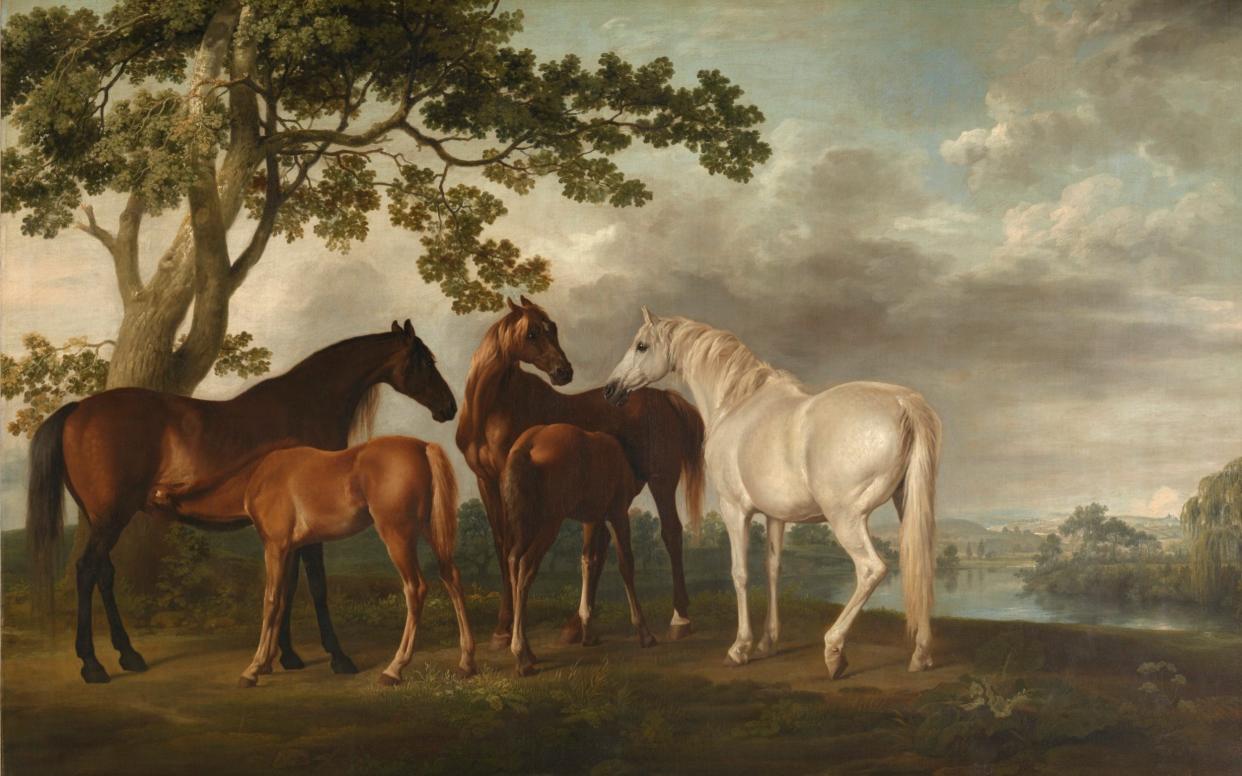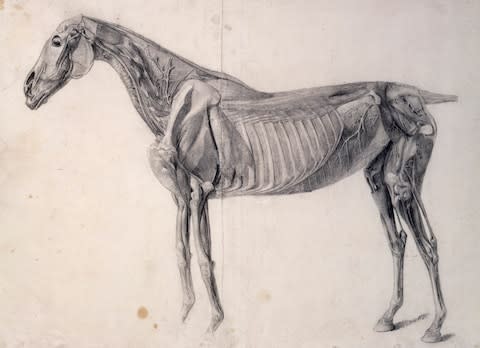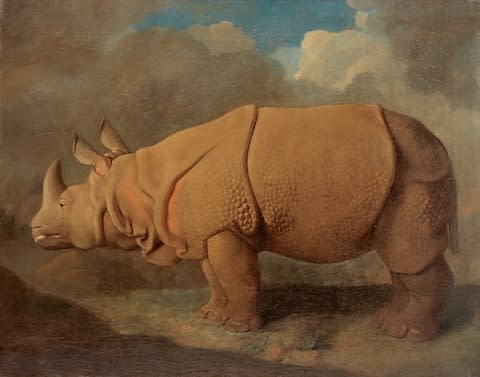George Stubbs: 'all done from Nature' review, MK gallery - a revelatory tribute to the missing link between the Renaissance and Damien Hirst

For an 18th century squire, having George Stubbs paint your prize thoroughbred was the greatest of honours. As Gainsborough was raising landscape to a sublime level, Stubbs gave to horse painting the gravitas of high art.
But, while the elite recognised Stubbs’ gift for capturing the creature’s nobility, they missed the point that he had more sympathy for the animals than he did for their owners. His disapproval of the way horses were treated is conveyed through the their frantic, exhausted expressions as they struggle under the authority of groom or rider; the tenderness between two retired racehorses communing in a landscape and in Stubbs’ reported lack of deference to his wealthy patrons.
It is a combination of this humane appreciation to the personality of each individual horse with Stubbs’ diagnostic analysis of anatomy that makes this exhibition so fascinating. It brings together more than 80 pieces for the first significant overview of Stubbs’ work for more than 30 years. It follows his gallop from largely self-taught portraitist to so-called “Liverpudlian Leonardo”.
Get past the gruesome human foetus illustrations – based on Stubbs’ own (probably illegal) dissections – and you encounter the breath-taking outcome of 18 months spent dissecting horses and drawing their insides. The clean precision of the illustrations belies what must have been a pungent experience executing them.

Surprisingly, at the centre of the show is a horse skeleton. This is the unbeaten champion Eclipse (1764-1789). Behind it rises the monumental painting Whistlejacket (1762), on a rare trek out from the National Gallery. It’s the first time that Stubbs’ masterpiece and anatomical drawings have been displayed alongside what remains of history’s most famous race-horse, whom Stubbs painted four times. Whistlejacket – the apotheosis of Stubbs’ achievement – communicates all of the dynamism and emotion that has now deserted poor Eclipse.
Another room surveys Stubbs’ explorations of the relationship between humans and horses – whether hunting or racing, wearily working or communing at leisure. The horse as status symbol elevated its owner in every way. In one striking painting, the High Sheriff of Nottinghamshire parades past his home, poised higher than the house itself, accompanied by his trophy wife in a dazzling red riding habit. The animals are lovingly rendered, while their handlers are largely depicted in an almost naïve, lifeless manner.
But horses are not the only beasts on show. Private menageries were all the rage during the period and, in another masterpiece, two Indian attendants goad a cheetah to attack a stag. Stubbs also painted the first credible image of a rhino, the hints of pink in its folds of flesh suggesting it had become a little too partial to the red wine for which it had reportedly developed a liking. And in an atmospheric depiction of a young moose, Stubbs places a detailed study of the detached antlers of a fully grown adult at the calf’s feet, perhaps a memento mori – like the distorted skull in Holbein’s The Ambassadors – at a time when extinction was still a controversial concept.

As he reached his own finishing line in 1806, Stubbs – heavily in debt after a failed collaboration involving painted ceramic panels with Josiah Wedgewood – was working on his Comparative Anatomical Exposition of the Structure of the Human Body with that of a Tiger and a Common Fowl. In some 120 painstaking drawings, he visually analysed each of his subjects, from their outer appearance to their innermost workings. Another drawing of a crouching human skeleton, shown next to a waving Barbary Ape, suggests that Stubbs considered the animal and human kingdoms to be on the same level – a man ahead of his time.
Today, as Gunther von Hagens’ Bodyworlds exhibition continues to attract millions of visitors and Damien Hirst’s monumental sculptures tease us with garish glimpses of what lies beneath, Stubbs’ obsessive dissection of nature place him as the missing link between the Renaissance fascination with anatomy and our ongoing curiosity with the universe concealed under our skin. In that – and his recognition that animals are not so far removed from humans genetically and emotionally – Stubbs emerges through this exhibition not only as a giant of 18th century British art, but as a radical innovator whose concerns chime with those of our own times.
Oct 12 until Jan 26; tickets 01908 6767900 mkgallery.org

